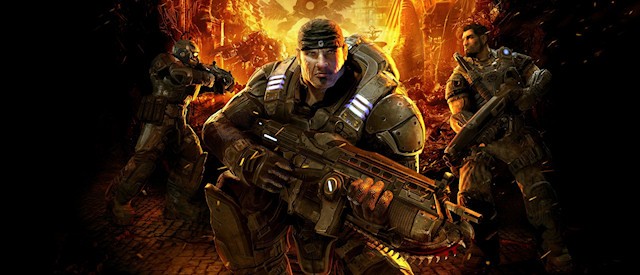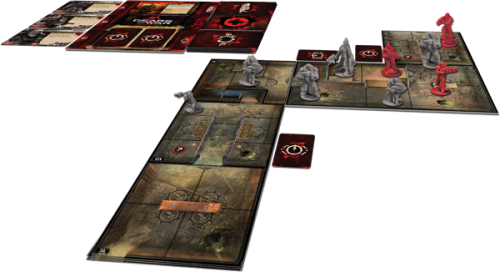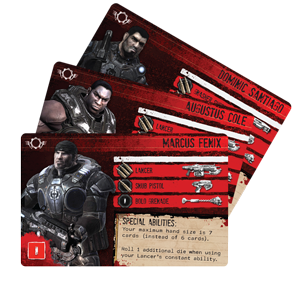


It’s time once again for Tabletop Co-Op, our new column dedicated to cooperative board and card games. Today, we’re taking a look at one of the many board game versions of a video game franchise, Gears of War: The Board Game. How does the war between the COG and the Locust translate into cardboard and plastic form?
Gears of War is obviously a popular video game series. All three installments of the Xbox 360 trilogy have been best sellers, and they are among the best games available on any modern console. A board game conversion would seem like just another marketing tool on the surface, but there’s much more to it than that. The folks over at Fantasy Flight Games have taken almost every aspect of the video game and translated it into a cooperative board game that is oozing with the Gears of War feel.

All your favorite Gears are here: Marcus and Dom are joined by Baird and Cole. Each of these characters have special abilities, differentiating them from one another. Marcus does extra damage, and Baird can hold extra weapons. The iconic Lancer and frag grenades as well as other weapons like the shotgun or boomshot all make appearances, too. Ammunition tokens, which can be spent to deal increased damage, are included, which mimics the ammo management that is so important to the video game.
Each player has a hand of cards, which represents possible actions that can be taken, as well as tracking health. When your soldier is hit, you must discard cards equal to the damage. You do get to draw two cards a turn, but you must play one, so avoiding damage is a key to success. Luckily, you can hide behind cover, just as in the video game, though cover is not as highly effective at preventing damage in the board game. If a COG runs out of cards, and takes more damage, they are considered to be bleeding out, and can be revived by other players. If Marcus, Dom, Baird, and Cole are all bleeding out at the same time, the game is over.
Gears of War: the Board Game uses a modular system for setup, and includes several different scenarios to play through, each with different enemies and objectives. There’s even a Horde mode, which should bring a smile to fans of the video game’s awesome survival mode. Lowly wretches and drones all the way up to powerful Boomers and an immense Berserker are among the Locust you will face. Each turn, an AI card must be drawn, which dictates the Locust tactics and actions, which might include spawning more foes or causing all the Locust to move closer to the COGs. As you might expect, there is a large degree of tension and “we’re not gonna make it!” when a particularly brutal AI card is revealed.
Combat is handled by rolling a set of custom dice. Attackers roll a number black dice, based on the weapon they are using. Defenders roll red dice, with additions for cover and other modifiers. The amount of wounds rolled by the attacker is compared to the shields rolled by the defender; if there are more wounds than shields, damage is dealt equal to the difference. An omen symbol on a die means special abilities trigger, like the grenade’s power to seal an emergence hole, for instance. It’s an intuitive system that plays out well.
Fantasy Flight Games is known for having high quality components in their board games, and Gears of War is no exception. The design of the cards uses art from the game, and feels very much like a natural extension of the Gears of War universe. The map pieces, tokens, and other bits are made of solid cardstock with a wear-resistant finish. Best of all are the miniatures, which are some of the best I’ve ever seen. The Locust in particular look incredible, with an impressive level of detail. The Gears themselves look good too, though they are a bit tough to differentiate in battle due to similar poses.
As a fan of the video game, I was thrilled when Gears of War: the Board Game was announced, and my excitement has not dulled upon actually playing it. Almost every aspect of the video game, even down to the visceral thrill of sawing a drone in two with a Lancer, is replicated. It’s an impressive design, and works brilliantly as a highly cooperative tactical board game experience. Fans of Marcus and Dom should start up their own bromance with this excellent tabletop game.